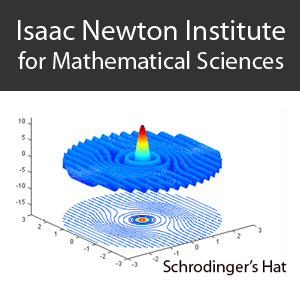Introduction to computational inversion IV
43 mins 36 secs,
181.63 MB,
Flash Video
484x272,
29.97 fps,
44100 Hz,
568.78 kbits/sec
Share this media item:
Embed this media item:
Embed this media item:
About this item

| Description: |
Siltanen, S (Helsinki)
Friday 29 July 2011, 11:00-11:45 |
|---|
| Created: | 2011-08-02 11:04 | ||||
|---|---|---|---|---|---|
| Collection: | Inverse Problems | ||||
| Publisher: | Isaac Newton Institute | ||||
| Copyright: | Siltanen, S | ||||
| Language: | eng (English) | ||||
| Credits: |
|
||||
| Abstract: | Inverse problems arise from indirect measurements of physical quantities. Examples include recovering the internal structure of objects from boundary measurements, for example X-ray attenuation from projection images or electric conductivity distribution from current-to-voltage measurements at the boundary. A defining feature of inverse problems is "ill-posedness", or extreme sensitivity to measurement and modeling errors: two quite different objects may produce almost exactly the same data. This is why specially regularized reconstruction methods are needed for the practical solution of inverse problems. This course explains how to detect ill-posedness in practical measurements and how to design noise-robust computational inversion algorithms. X-ray tomography is used as a guiding example, and Tikhonov regularization is the basic numerical methodology. Matlab software is provided for the participants to enable numerical experiments. |
|---|---|
Available Formats
| Format | Quality | Bitrate | Size | |||
|---|---|---|---|---|---|---|
| MPEG-4 Video | 640x360 | 1.84 Mbits/sec | 604.77 MB | View | Download | |
| WebM | 640x360 | 1.43 Mbits/sec | 468.14 MB | View | Download | |
| Flash Video * | 484x272 | 568.78 kbits/sec | 181.63 MB | View | Download | |
| iPod Video | 480x270 | 506.29 kbits/sec | 161.68 MB | View | Download | |
| MP3 | 44100 Hz | 125.02 kbits/sec | 39.73 MB | Listen | Download | |
| Auto | (Allows browser to choose a format it supports) | |||||

